Abstract
We reported the use of the timed manual method, routinely employed as an indicator to the relative abundance of domestic triatomine bugs, to estimate their absolute density in houses. A team of six people collected Rhodnius prolixus Stål bugs from the walls and roofs of 14 typical palm-leaf rural houses located in Cojedes, Venezuela, spending 40 minutes searching in each house. One day after these manual collections, all the houses were demolished and the number of triatomine bugs were identified by instar and counted. Linear regression analyses of the number of R. prolixus collected over 4 man-hours and the census counts obtained by house demolition indicated that the fit of the data by instar (stage II--adult) and place of capture (roof versus palm walls versus mud walls) was satisfactory. The slopes of the regressions were interpreted as a measure of "catchability" (probability of capture). Catchability increased with developmental stage (ranging from 11.2% in stage II to 38.7% in adults), probably reflecting the increasing size and visibility of bugs as they evolved. The catchability on palm wall was higher than that for roofs or mud walls, increasing form 1.3% and 3.0% in stage II to 13.4% and 14.0% in adults, respectively. We reported, also, regression equations for converting field estimates of timed manual collections of R. prolixus into absolute density estimates.
Full text
PDF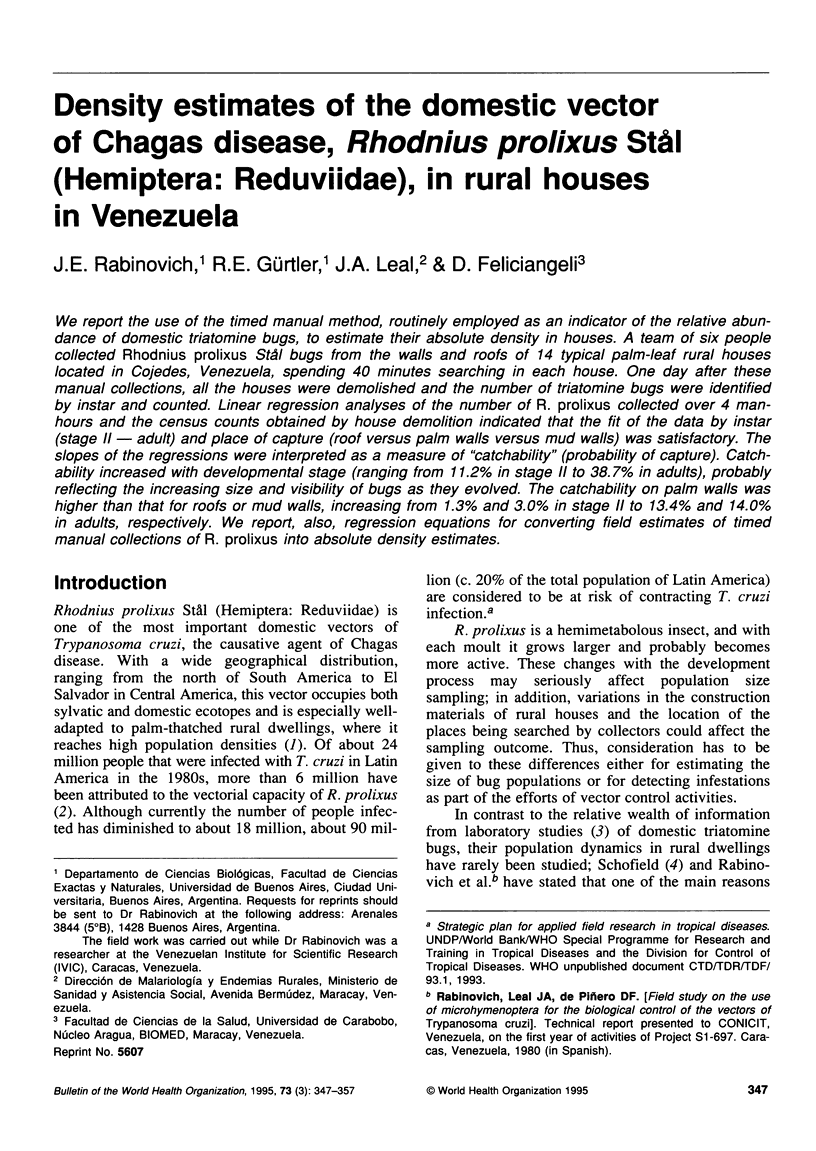
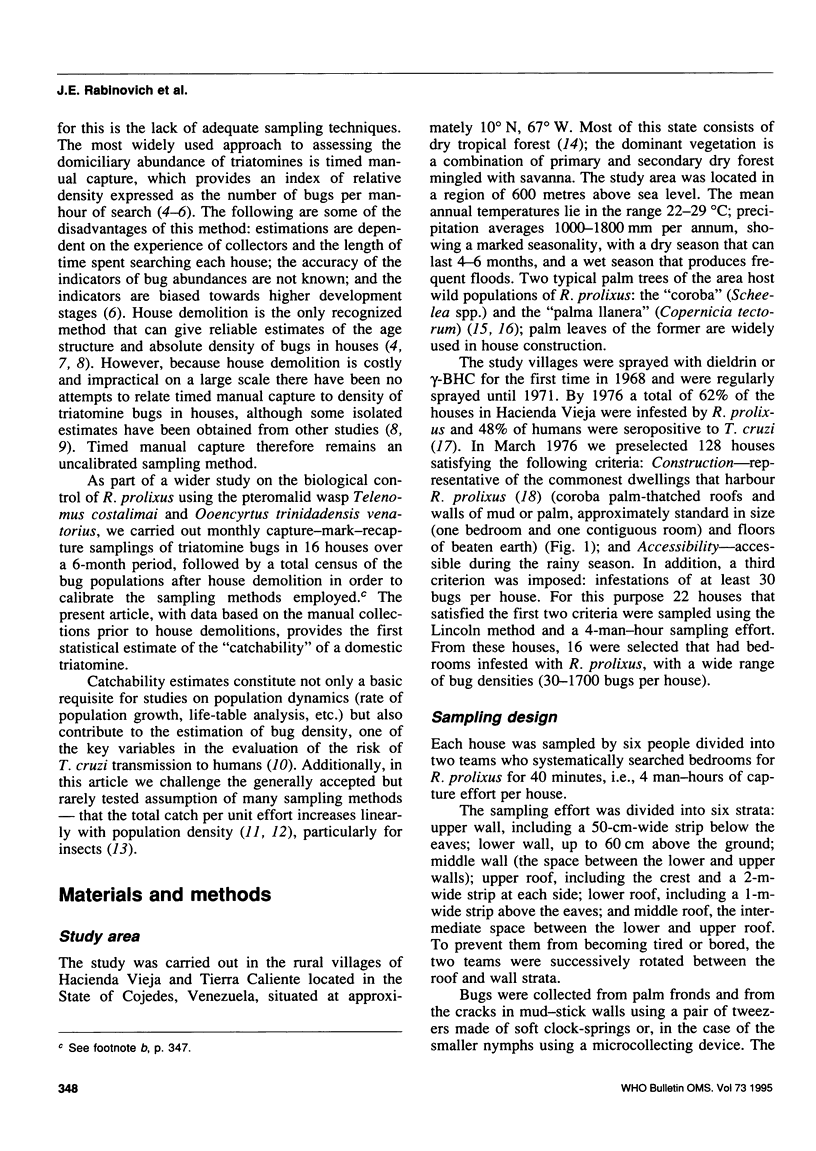
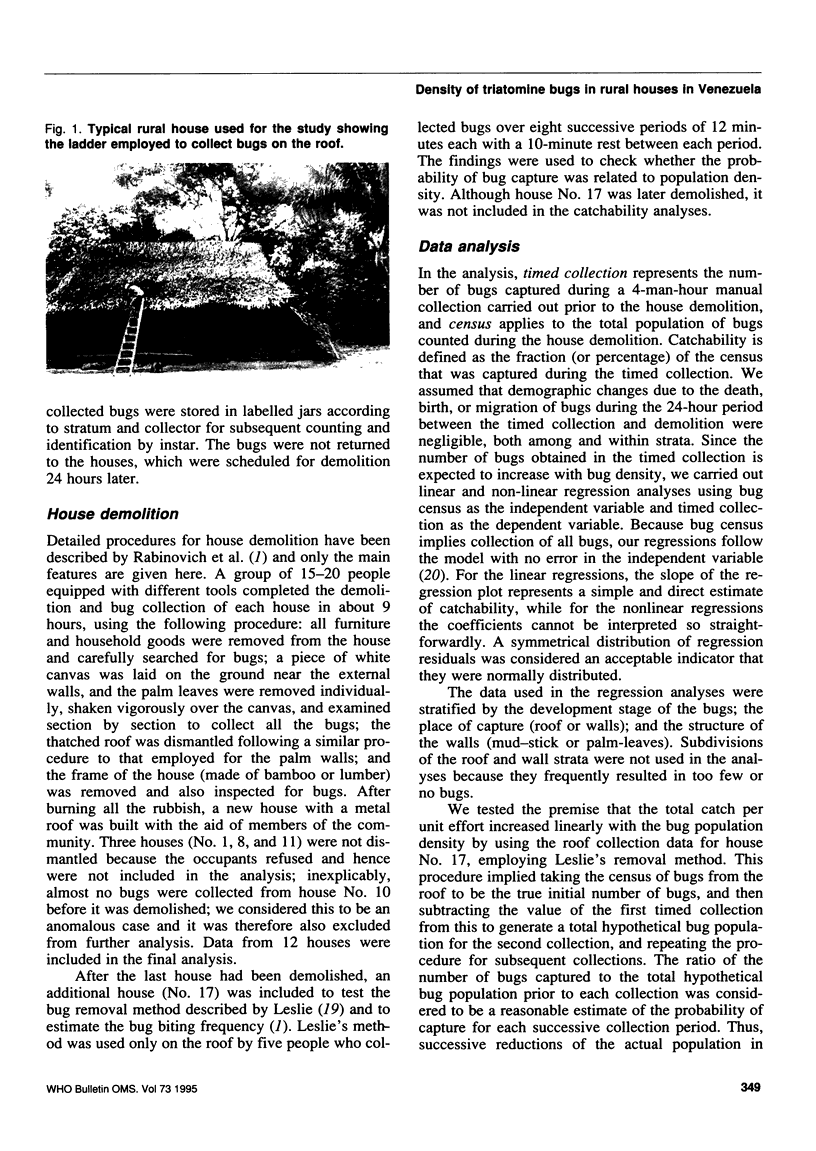
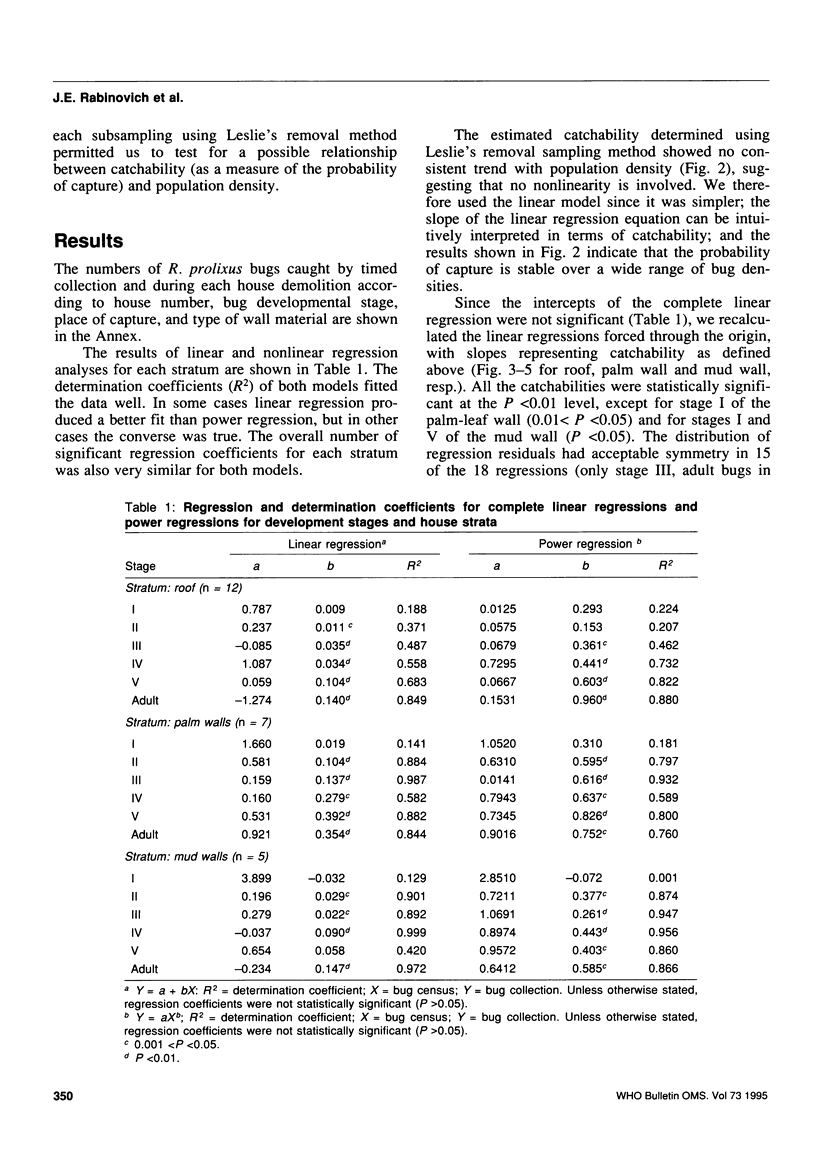
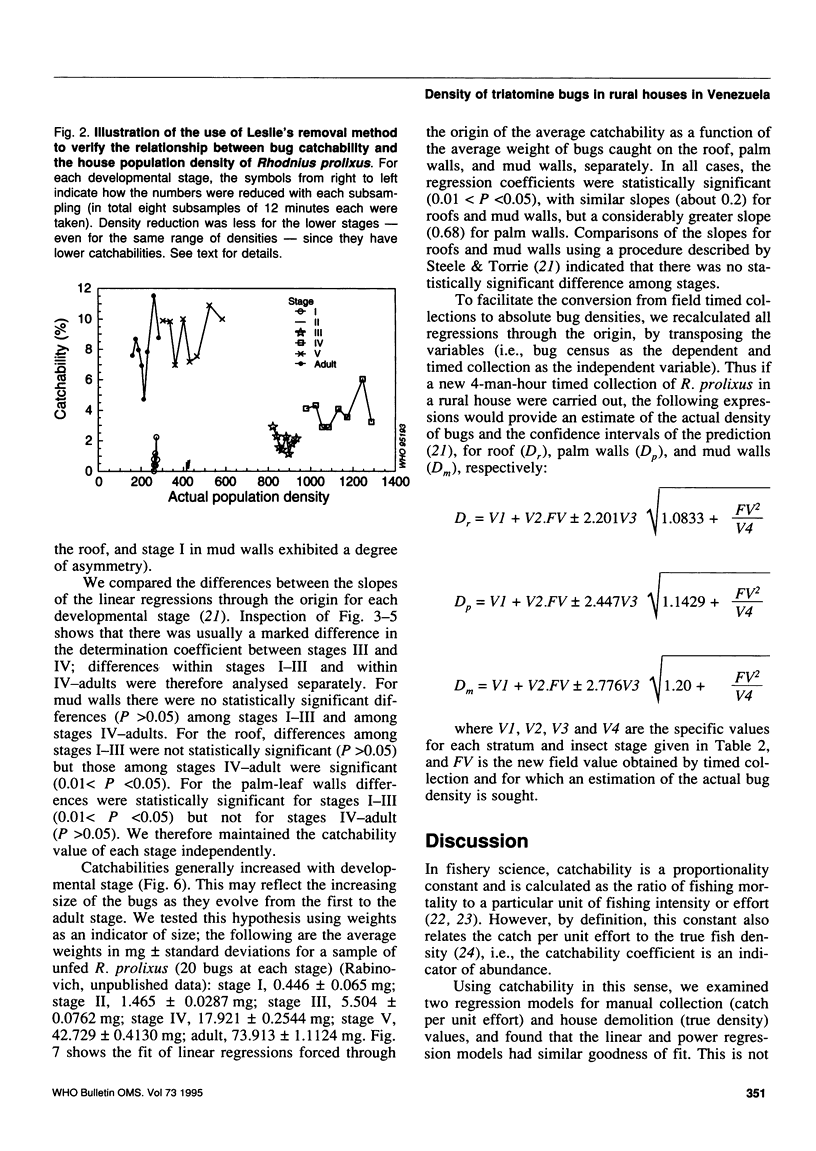
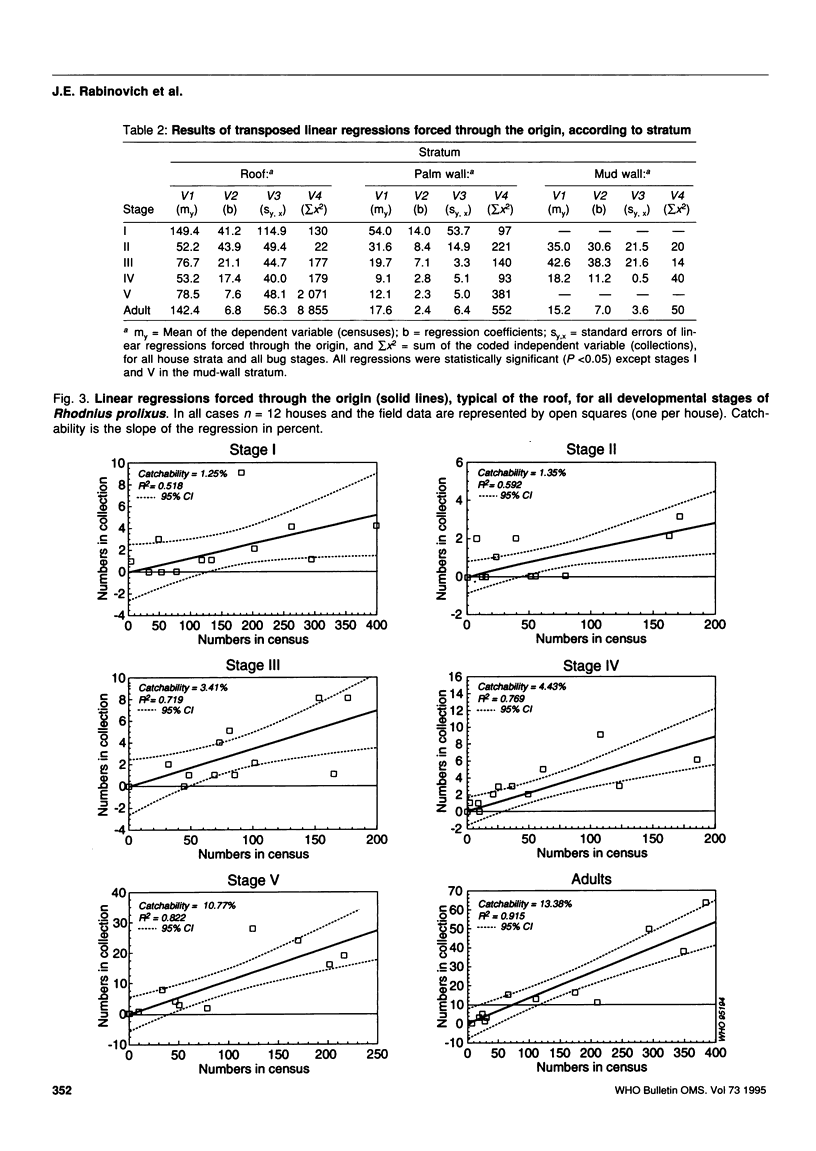
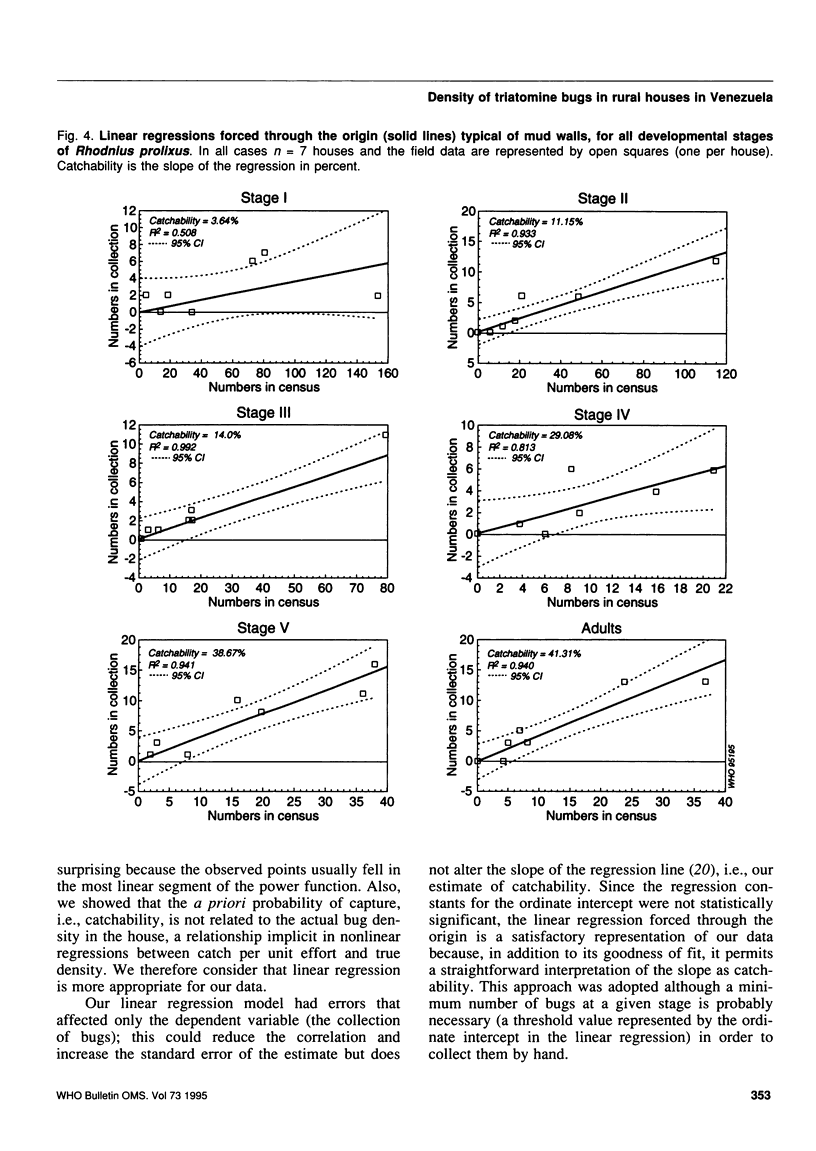
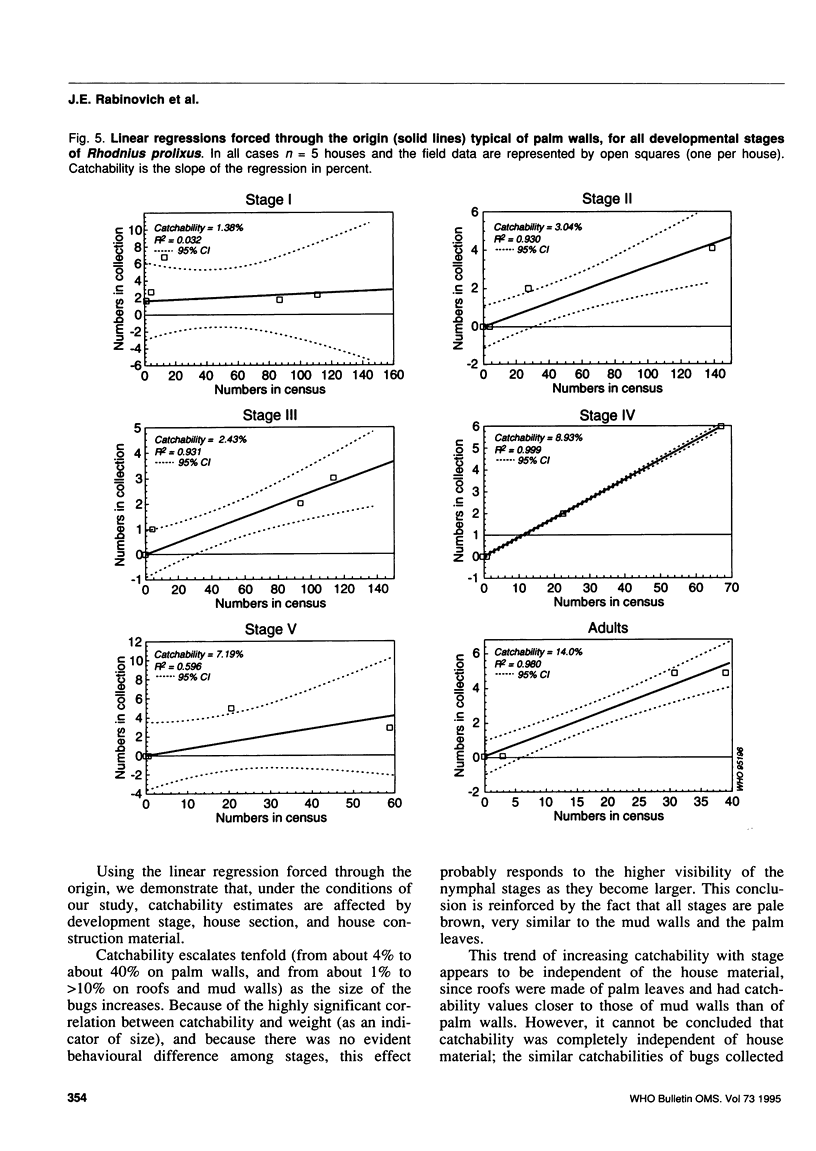

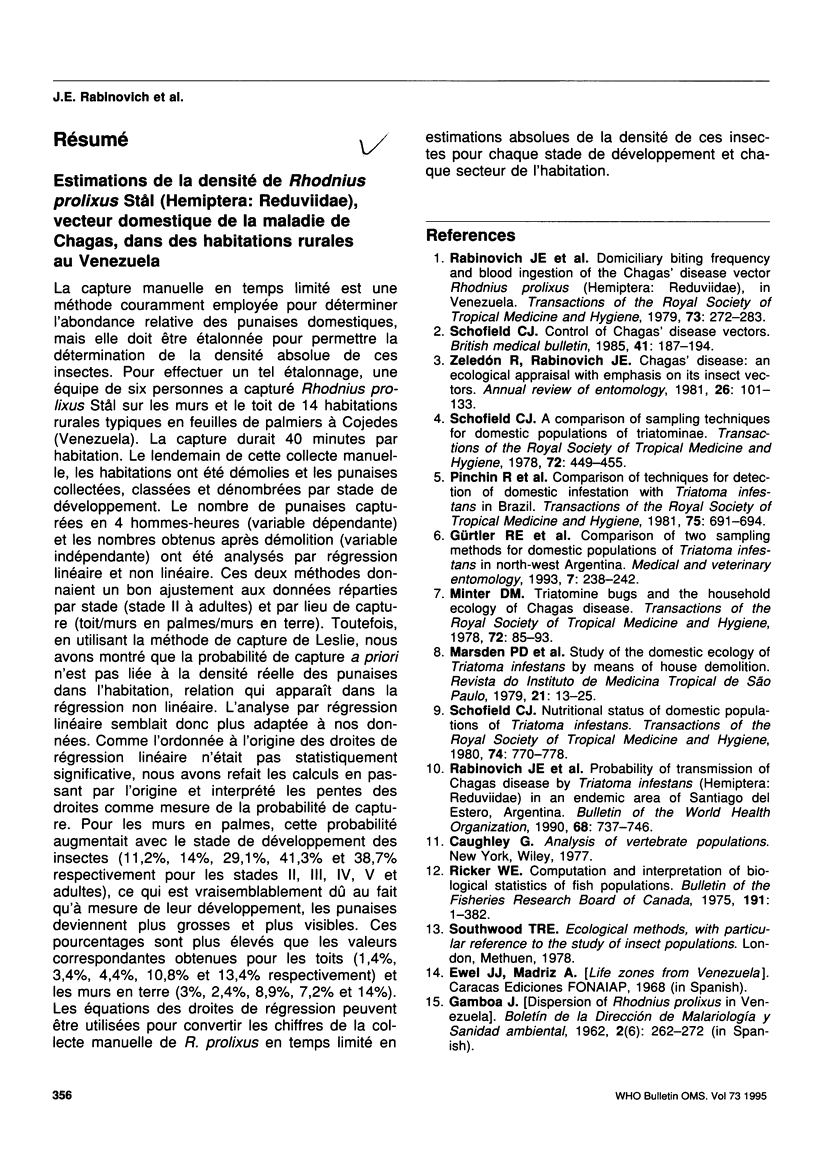
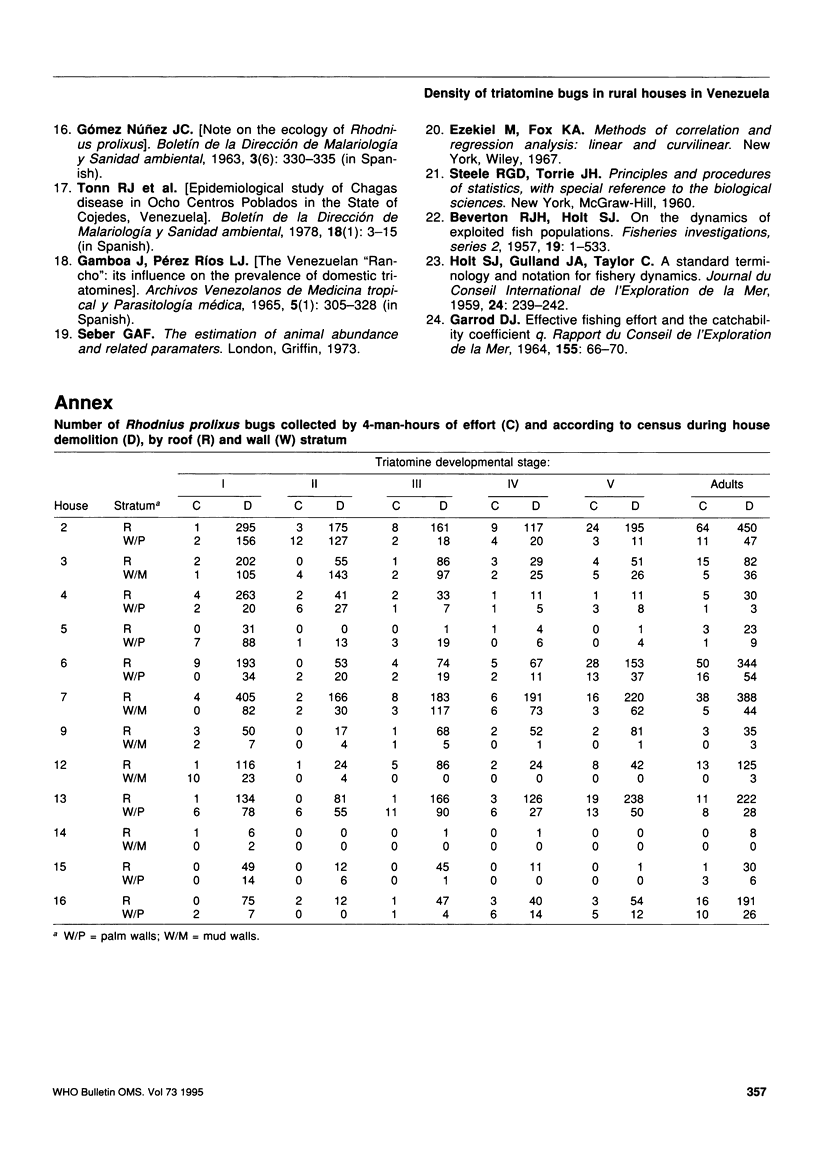
Images in this article
Selected References
These references are in PubMed. This may not be the complete list of references from this article.
- Gürtler R. E., Schweigmann N. J., Cecere M. C., Chuit R., Wisnivesky-Colli C. Comparison of two sampling methods for domestic populations of Triatoma infestans in north-west Argentina. Med Vet Entomol. 1993 Jul;7(3):238–242. doi: 10.1111/j.1365-2915.1993.tb00683.x. [DOI] [PubMed] [Google Scholar]
- Pinchin R., Fanara D. M., Castleton C. W., Oliveira Filho A. M. Comparison of techniques for detection of domestic infestations with Triatoma infestans in Brazil. Trans R Soc Trop Med Hyg. 1981;75(5):691–694. doi: 10.1016/0035-9203(81)90150-4. [DOI] [PubMed] [Google Scholar]
- Rabinovich J. E., Leal J. A., Feliciangeli de Piñero D. Domiciliary biting frequency and blood ingestion of the Chagas's disease vector Rhodnius prolixus Ståhl (Hemiptera: Reduviidae), in Venezuela. Trans R Soc Trop Med Hyg. 1979;73(3):272–283. doi: 10.1016/0035-9203(79)90082-8. [DOI] [PubMed] [Google Scholar]
- Rabinovich J. E., Wisnivesky-Colli C., Solarz N. D., Gürtler R. E. Probability of transmission of Chagas disease by Triatoma infestans (Hemiptera: Reduviidae) in an endemic area of Santiago del Estero, Argentina. Bull World Health Organ. 1990;68(6):737–746. [PMC free article] [PubMed] [Google Scholar]
- Schofield C. J. Control of Chagas' disease vectors. Br Med Bull. 1985 Apr;41(2):187–194. doi: 10.1093/oxfordjournals.bmb.a072048. [DOI] [PubMed] [Google Scholar]
- Schofield C. J. Nutritional status of domestic populations of Triatoma infestans. Trans R Soc Trop Med Hyg. 1980;74(6):770–778. doi: 10.1016/0035-9203(80)90197-2. [DOI] [PubMed] [Google Scholar]
- Zeledón R., Rabinovich J. E. Chagas' disease: an ecological appraisal with special emphasis on its insect vectors. Annu Rev Entomol. 1981;26:101–133. doi: 10.1146/annurev.en.26.010181.000533. [DOI] [PubMed] [Google Scholar]



